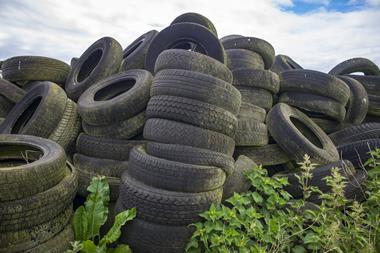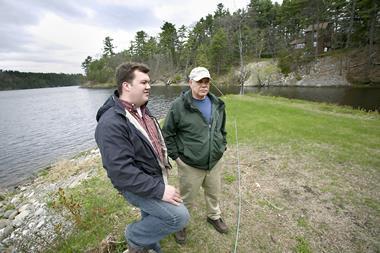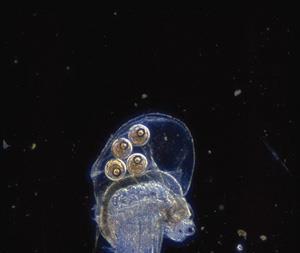Re-analysis of tissue and sediment collected from a mass crustacean mortality event in late 2021 and early 2022 in northeast England has found low levels of pyridine in the samples. Some scientists had blamed historical industrial discharges of the chemical for the die-off.
In the autumn of 2021, a mass mortality event began that led to mostly crabs and lobsters living along Teesside’s coastline dying. The event triggered a major investigation which involved collecting samples to test for potential pollutants and biological contaminants to determine the cause. A cross-agency response incorporated the assessment of various agents proposed to be causative, including chemicals such as cyanide and pyridine, crustacean diseases and algal blooms.
However, according to a new report published on 3 November, the analytical screening method used at the time by the Environment Agency was neither quantitative nor validated for biota or sediment samples. Therefore, in December 2021, the Department for Environment, Food and Rural Affairs (Defra) commissioned the Centre for Environment, Fisheries and Aquaculture Science (Cefas) to develop and validate a robust quantitative method for pyridine that was appropriate for these samples. The method was then used to re-analyse stored samples collected following the crustacean deaths.
Reanalysis using head space injection gas chromatography–mass spectrometry found that samples that had originally returned high pyridine levels (3 –429mg/kg) using the Environment Agency’s method had very low concentrations of the chemical with the new analysis (<0.22–0.077mg/kg). Analysis of additional crab tissue samples, unrelated to the events, also demonstrated the presence of pyridine at very low levels (<0.02–0.139mg/kg).
In its report, Cefas concluded that it was therefore ‘very unlikely that pyridine, as a single chemical entity, was the cause of the crab and lobster mortalities during autumn 2021’. The findings support the conclusion of the independent Crustacean Mortality Expert Panel (CMEP), published in January 2023, that it was very unlikely that pyridine caused the crab and lobster mortalities.
Teesside has a history of industries that produce pyridine, including chemical plants and steelworks. However, the CMEP reported that no source of sufficient quantity of any toxic material could be connected to the die-off, despite a range of relevant sediment and water measurements. Overall, it said it was ‘unable to identify a clear and convincing single cause for the unusual crustacean mortality’. Of all the possibilities investigated, a novel pathogen was cited as the most likely as it explained the sustained and widespread nature of the die-off.
Unanswered questions
However, doubts remain among some researchers. ‘The findings of the report actually vindicate the position that pyridine would have a role,’ says Gary Caldwell, an expert in marine biology at Newcastle University who led a team that published a preprint linking pyridine to the mass die-off. ‘Some of the samples they took were from the original die-offs but they had been kept in a –20°C freezer. You do not keep volatile chemicals at –20°C and expect them to still be there years after the fact.’
‘That aside, whenever they went back and got more sediment samples weeks after the die-off, they were still finding pyridine in the sediment – even with pyridine’s really short half-life – and what was not mentioned in the report was that some of the sediment pyridine levels they were finding did fall within the toxic range of pyridine to crab and lobster.’
Caldwell acknowledges that having a validated method was ‘essential’ and having proven analytical protocols available would be useful for any future incidents going forward. He also said that the main conclusions of Cefas were ‘really important’ because up until now Defra had been ‘completely strident’ in their view that there was no chemical involvement in the die-offs.
‘Obviously, this study has not closed the case, nor should it,’ says Mark Fitzsimons, an environmental chemist at the University of Plymouth who was a member of the CMEP. ‘It’s not a matter of “this indicates that pyridine is very unlikely therefore we move on”, it’s more that now there’s extra capacity to apply analytical chemistry to identifying whether pyridine, or other chemicals that might have an anthropogenic source in some potentially significant concentration, [can] be considered.’
‘All you can do in these situations is to assess particular causes,’ Fitzsimons says. ‘Pyridine was raised as a possible cause given it’s linked to industrial operations and the potential legacy of chemicals in the estuary as an industrialised estuary,’ he adds. ‘But merely the potential presence of the chemical can’t be identified as the cause, there has to be a credible link to the concentrations that organisms would be exposed to, in order to cause a toxic effect.’
Fitzsimons says that the possibility of a similar event happening in the future cannot be ‘ruled out’. ‘But until a cause is identified, and even if it were to be identified, it might not be possible to prevent such an event, tragic though it would be,’ he adds.

















No comments yet